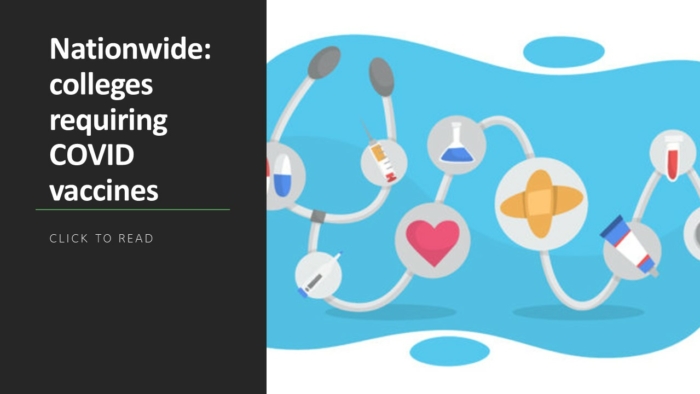Two key indicators that appeared to point to a turnaround in higher education enrollments simply may have been mirages.
With 63% of colleges and universities now reporting data, the number of undergraduate students is projected to decline by 1.1% overall in 2022-23, according to the first of several Stay Informed reports from the National Student Clearinghouse Research Center. If that percentage holds, higher education will have lost 7.5% of its pool of students since the fall of 2019.
Although the losses this year would not be as significant as they were in 2021-22, it still would be a gut punch for an industry desperately trying to rebound from the fallout of the COVID-19 pandemic.
“I certainly wouldn’t call this a recovery,” said Doug Shapiro, executive director, National Student Clearinghouse Research Center. “When you’re in a deep hole, the fact that you’re only digging a tiny bit further is not really good news.”
But it is not the whole story.
In the Clearinghouse report, which covers some 10.3 million institutions across 42 states, there are hints of significant changes afoot—both positive and negative—that could shape at least the near-term for the industry. For example, besieged community colleges have made a hearty comeback, led by a 1% increase in freshman enrollments and a double-digit turnaround in undergraduates overall. Historically Black Colleges and Universities have shown early gains of 2.4%. And primarily online institutions have seen a rise of 3.2% year over year. That doesn’t begin to offset all of the setbacks, but it might be a start.
More from UB: FAFSA filings likely to rise in 2022-23, according to new survey
However, the disappointing reports have continued from four-year institutions, which at the moment have seen enrollments fall another 1.6% among the public institutions and nearly 1% at the private nonprofits. The less selective the institution, the worst the numbers project. Colleges hoping for a comeback from freshman students aren’t getting it, either. They’re off by more than 2% at publics and 3% at the privates.
“After two straight years of historically large losses, it is particularly troubling that numbers are still falling, especially among freshmen,” Shapiro said. “Although the decline has slowed and there are some bright spots, a path back to pre-pandemic enrollment levels is growing further out of reach.”
Surprising results?
Shapiro said he was “surprised” by the lack of a rebound because of the glowing mentions of application increases reported by many institutions and because of the boosts in students applying for the Free Application for Federal Student Aid (FAFSA). However, he pointed out that mandates requiring students to fill them out in some states may not be “indicative of students’ intentions to enroll. They might just be checking a box.”
“At four-year institutions, we had interpreted the results from last year as suggesting that there were larger concerns about affordability at four-year institutions,” Shapiro said. “That was when we first started to see larger declines. I don’t know what that says, that even though more students applied for federal financial aid, they don’t seem to be showing up in college in enrollments right now.”
Four-year institutions, and higher education in general, still faces big challenges, including: inflation, short-term credentials piquing the interest of students, and costs and potential debut from lengthy degree programs. Despite the promises of financial aid, scholarships and tuition leveling in some cases, students are not coming back in droves. Colleges also face another worry on the horizon: the demographic cliff projected to hit in three years.
The slivers of positive news, however, should not be discounted, especially as the report is still somewhat incomplete and changes have occurred frequently during the past few cycles. Though graduate enrollments dropped 1%, they are still ahead of where they were before the pandemic. Freshman enrollments at HBCUs are also up 6.6% from the early reporting, an astonishing turnaround. And while Hispanic Serving Institutions saw another fallback of -1.2%, it was a much better result than in 2021 (-4.8%). White undergraduate students are seeing the largest declines at 3.6%.
Because the data is fluid, with further reports set to clear up any uncertainty from the Clearinghouse in future months, it is simply too soon to speculate on whether the 23% growth in fully online institutions over three years is here to stay. But it is intriguing.
“It’s certainly a sign that [students are] increasingly open to online degree programs,” Shapiro said. “That seems a natural outcome of the fact that almost everyone was forced online during the last two years. But we don’t really have direct evidence that that’s the cause. It could also be about the traditional advantages of online for adult students, which include the convenience and flexibility of being able to work around part-time employment. There may be simply more younger students who are more invested in the workforce right now and just trying to squeeze in some higher education courses on the side.”
One certainty is that although highly selective schools are reporting big declines in freshman enrollment, Shapiro said that was likely the result of students taking gap years in 2020, returning in 2021 and then institutions leveling off admissions. “These are schools with a lot of market power, and they have far more applicants than seats,” he said. “They can really control their freshman class sizes to exactly what they want.”
There were several states that were not included in the data because they had less than 45% of colleges reporting their information. As far as states that did report, New Hampshire, New Mexico and South Carolina are the big winners so far, gaining between 3.7% and 6.8%. The big losers are Alaska, Michigan, Kansas, Missouri and Nevada, which all have reported declines of more than 4%.
In terms of majors, computer science is seeing a 10% increase at two- and four-year institutions, while healthcare is declining at 5%.



